Information
Theory
A Tutorial Introduction
James V Stone
�
Reviews of Information Theory
“Information lies at the heart of biology, societies depend on it, and our
ability to process information ever more efficiently is transforming our lives.
By introducing the theory that enabled our information revolution, this
book describes what information is, how it can be communicated efficiently,
and why it underpins our understanding of biology, brains, and physical
reality. Its tutorial approach develops a deep intuitive understanding using
the minimum number of elementary equations. Thus, this superb introduction
not only enables scientists of all persuasions to appreciate the relevance of
information theory, it also equips them to start using it. The same goes for
students. I have used a handout to teach elementary information theory to
biologists and neuroscientists for many years. I will throw away my handout
and use this book. ”
Simon Laughlin, Professor of Neurobiology, Fellow of the Royal Society,
Department of Zoology, University of Cambridge, England.
uThis is a really great book it describes a simple and beautiful idea in a
way that is accessible for novices and experts alike. This ’’sim ple idea” is
that information is a formal quantity that underlies nearly everything we
do. In this book, Stone leads us through Shannons fundamental insights;
starting with the basics of probability and ending with a range of applications
including thermodynamics, telecommunications, computational neuroscience
and evolution. There are some lovely anecdotes: I particularly liked the
account of how Samuel Morse (inventor of the Morse code) pre-empted
modern notions of efficient coding by counting how many copies of each letter
were held in stock in a printer’s workshop. The treatment of natural selection
as ”a means by which information about the environment is incorporated into
DNA” is both compelling and entertaining. The substance of this book is a
clear exposition of information theory, written in an intuitive fashion (true
to Stone’s observation that ’’rigour follows insight”). Indeed, I wish that this
text had been available when I was learning about information theory. Stone
has managed to distil all of the key ideas in information theory into a coherent
story. Every idea and equation that underpins recent advances in technology
and the life sciences can be found in this informative little book. ”
Professor Karl Friston, Fellow of the Royal Society. Scientific Director of the
Wellcome Trust Centre for Neuroimaging,
Institute of Neurology, University College London.
�
Reviews of Bayes’ Rule: A Tutorial Introduction
“An excellent book ... highly recommended.”
CHOICE: Academic Reviews Online, February 2014.
“Short, interesting, and very easy to read, Bayes’ Rule serves as an excellent
primer for students and professionals ... ”
Top Ten Math Books On Bayesian Analysis, July 2014.
“An excellent first step for readers with little background in the topic. ”
Computing Reviews, June 2014.
“The author deserves a praise for bringing out some of the main principles
of Bayesian inference using just visuals and plain English. Certainly a nice
intro book that can be read by any newbie to Bayes. ”
https://rkbookreviews.wordpress.com/, May 2015.
From the Back Cover
“Bayes’ Rule explains in a very easy to follow manner the basics of Bayesian
analysis. ”
Dr Inigo Arregui, Ramon y Cajal Researcher, Institute of Astrophysics,
Spain.
“A crackingly clear tutorial for beginners. Exactly the sort of book required
for those taking their first steps in Bayesian analysis. ”
Dr Paul A. Warren, School of Psychological Sciences, University of
Manchester.
“This book is short and eminently readable. R introduces the Bayesian
approach to addressing statistical issues without using any advanced
mathematics, which should make it accessible to students from a wide range
of backgrounds, including biological and social sciences. ”
Dr Devinder Sivia, Lecturer in Mathematics, St John’s College, Oxford
University, and author of Data Analysis: A Bayesian Tutorial.
“For those with a limited mathematical background, Stone’s book provides an
ideal introduction to the main concepts of Bayesian analysis. ”
Dr Peter M Lee, Department of Mathematics, University of York. Author of
Bayesian Statistics: An Introduction.
“Bayesian analysis involves concepts which can be hard for the uninitiated to
grasp. Stone’s patient pedagogy and gentle examples convey these concepts
with uncommon lucidity.”
Dr Charles Fox, Department of Computer Science, University of Sheffield.
�
Information Theory
A Tutorial Introduction
James V Stone
�
Title: Information Theory: A Tutorial Introduction
Author: James V Stone
©2015 Sebtel Press
First Edition, 2015.
Typeset in ETeK2£.
Cover design: Stefan Brazzo.
Second printing.
ISBN 978-0-9563728-5-7
The front cover depicts Claude Shannon (1916-2001).
�
For Nikki
�
Suppose that we were asked to arrange the following in two
categories - distance, mass, electric force, entropy, beauty,
melody. I think there are the strongest grounds for placing
entropy alongside beauty and melody ...
Eddington A, The Nature of the Physical World, 1928.
�
Contents
Preface
1. What Is Information?
2. Entropy of Discrete Variables
1
1
1.1. Introduction.................................................
2
1.2. Information, Eyes and Evolution........................
3
1.3. Finding a Route, Bit by B it ..............................
8
1.4. A Million Answers to Twenty Questions................
1.5. Information, Bits and Binary Digits .................... 10
1.6. Example 1: Telegraphy..................................... 11
1.7. Example 2: Binary Images................................ 13
1.8. Example 3: Grey-Level Im a ges.......................... 15
1.9. Sum m ary................................................... 20
21
2.1. Introduction................................................. 21
2.2. Ground Rules and Terminology.......................... 21
2.3. Shannon’s Desiderata ..................................... 31
2.4. Information, Surprise and Entropy...................... 31
2.5. Evaluating Entropy......................................... 38
2.6. Properties of E n trop y ..................................... 41
2.7. Independent and Identically Distributed Values........ 43
2.8. Bits, Shannons, and B a n s................................ 43
2.9. Sum m ary................................................... 44
45
3.1. Introduction................................................. 45
3.2. Capacity of a Discrete Noiseless Channel................ 46
3.3. Shannon’s Source Coding Theorem ...................... 49
3.4. Calculating Information Rates............................ 50
3.5. Data Com pression......................................... 54
3.6. Huffman C o d in g ........................................... 57
3.7. The Entropy of English Letters.......................... 61
3.8. Why the Theorem is T ru e................................ 71
3.9. Kolmogorov Complexity.................................. 76
3.10. Sum m ary................................................... 78
3. The Source Coding Theorem
�

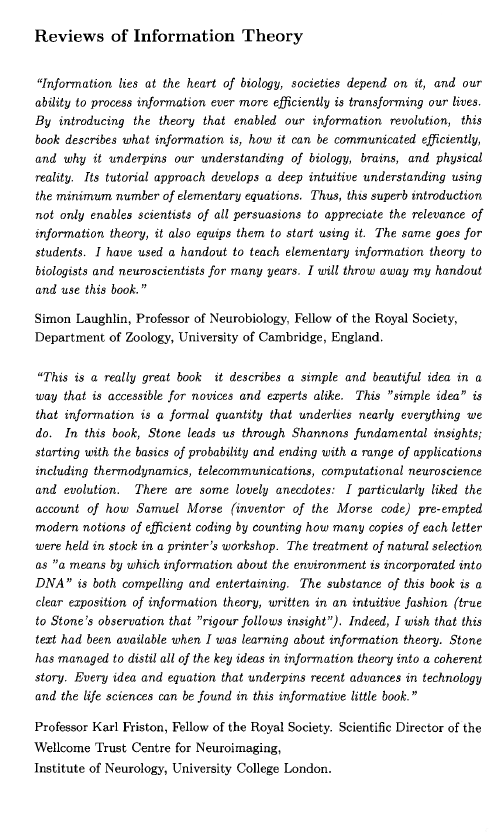
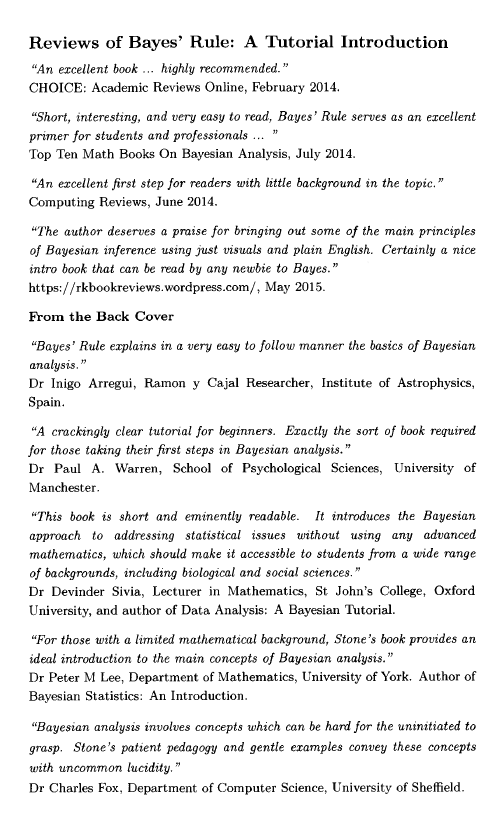
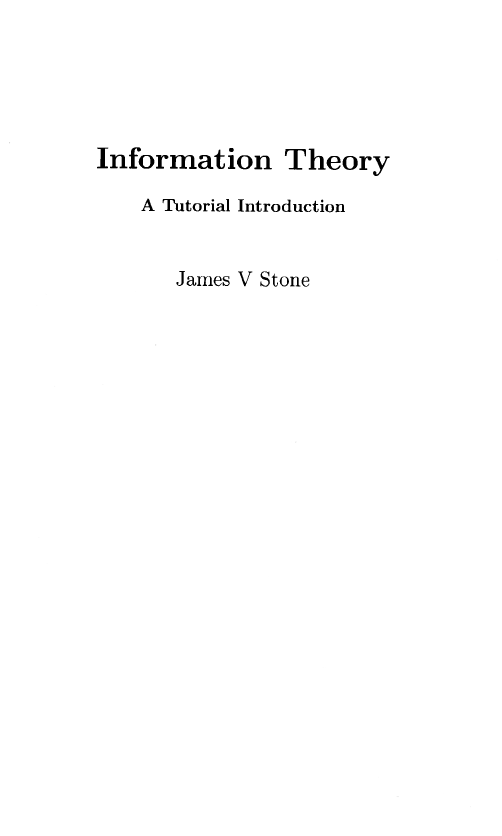
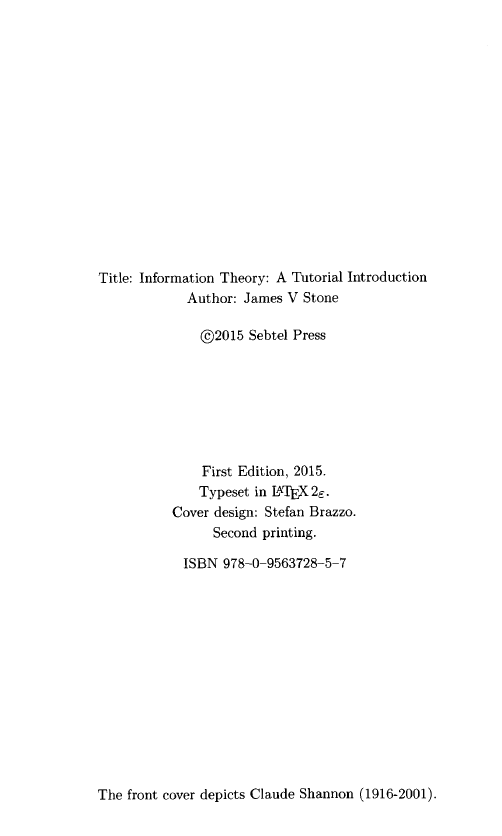

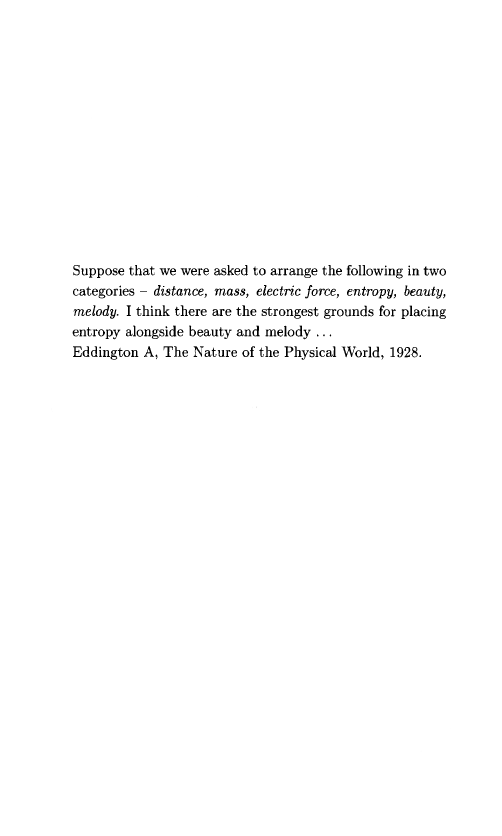
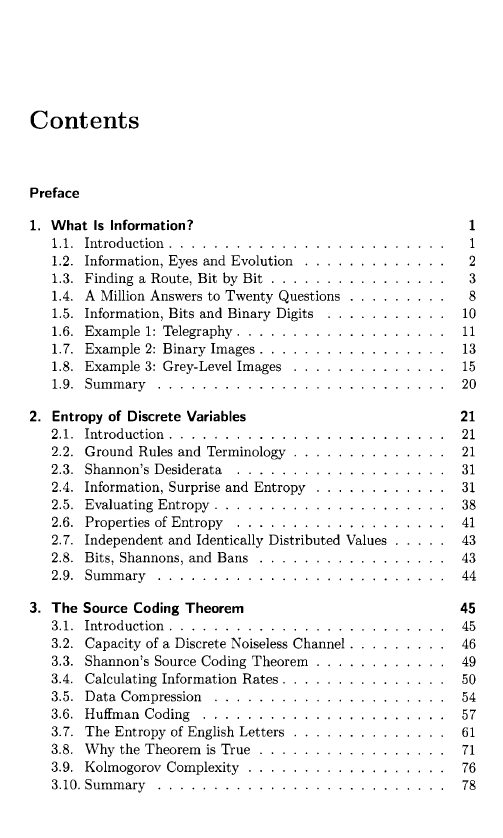








 2023年江西萍乡中考道德与法治真题及答案.doc
2023年江西萍乡中考道德与法治真题及答案.doc 2012年重庆南川中考生物真题及答案.doc
2012年重庆南川中考生物真题及答案.doc 2013年江西师范大学地理学综合及文艺理论基础考研真题.doc
2013年江西师范大学地理学综合及文艺理论基础考研真题.doc 2020年四川甘孜小升初语文真题及答案I卷.doc
2020年四川甘孜小升初语文真题及答案I卷.doc 2020年注册岩土工程师专业基础考试真题及答案.doc
2020年注册岩土工程师专业基础考试真题及答案.doc 2023-2024学年福建省厦门市九年级上学期数学月考试题及答案.doc
2023-2024学年福建省厦门市九年级上学期数学月考试题及答案.doc 2021-2022学年辽宁省沈阳市大东区九年级上学期语文期末试题及答案.doc
2021-2022学年辽宁省沈阳市大东区九年级上学期语文期末试题及答案.doc 2022-2023学年北京东城区初三第一学期物理期末试卷及答案.doc
2022-2023学年北京东城区初三第一学期物理期末试卷及答案.doc 2018上半年江西教师资格初中地理学科知识与教学能力真题及答案.doc
2018上半年江西教师资格初中地理学科知识与教学能力真题及答案.doc 2012年河北国家公务员申论考试真题及答案-省级.doc
2012年河北国家公务员申论考试真题及答案-省级.doc 2020-2021学年江苏省扬州市江都区邵樊片九年级上学期数学第一次质量检测试题及答案.doc
2020-2021学年江苏省扬州市江都区邵樊片九年级上学期数学第一次质量检测试题及答案.doc 2022下半年黑龙江教师资格证中学综合素质真题及答案.doc
2022下半年黑龙江教师资格证中学综合素质真题及答案.doc